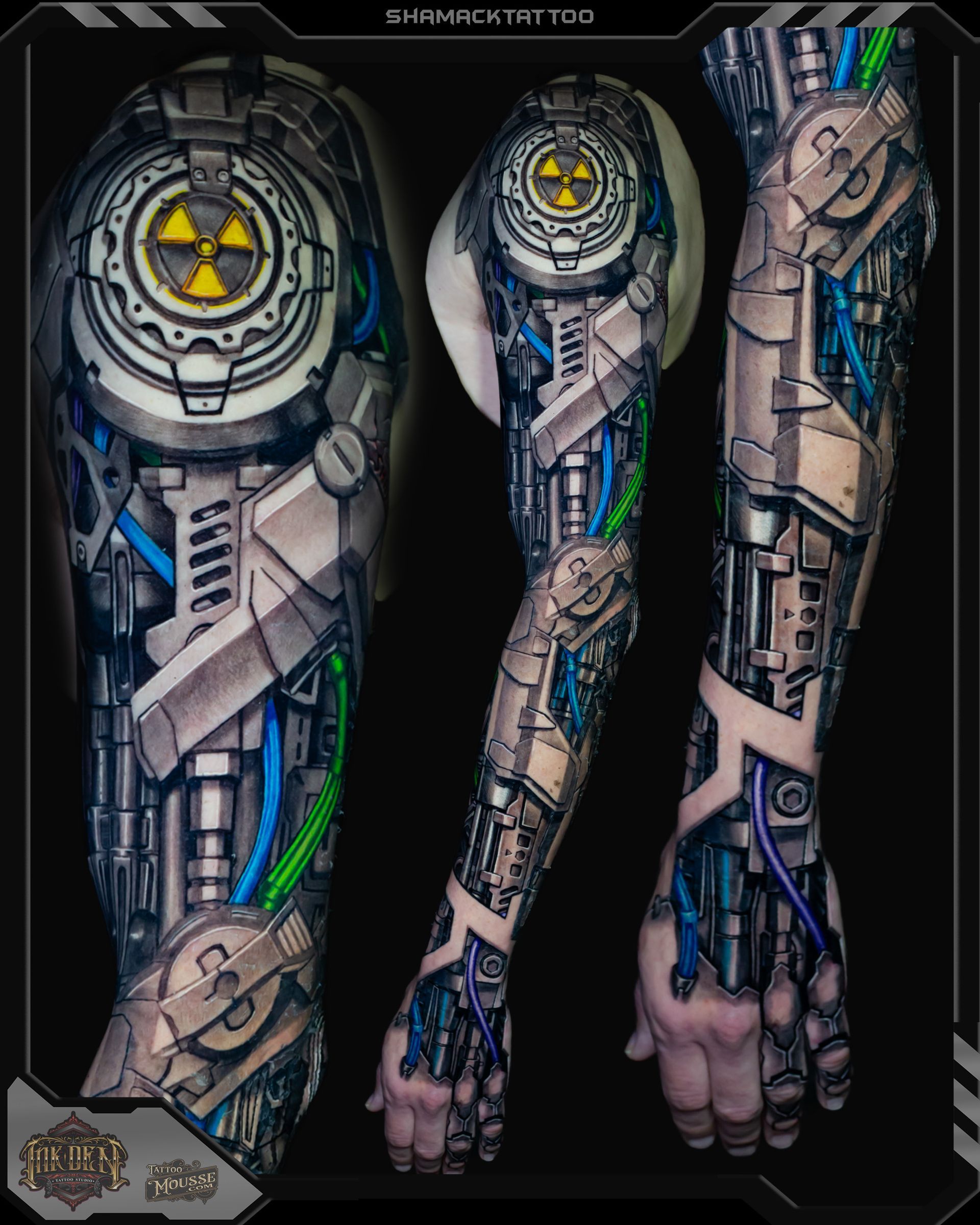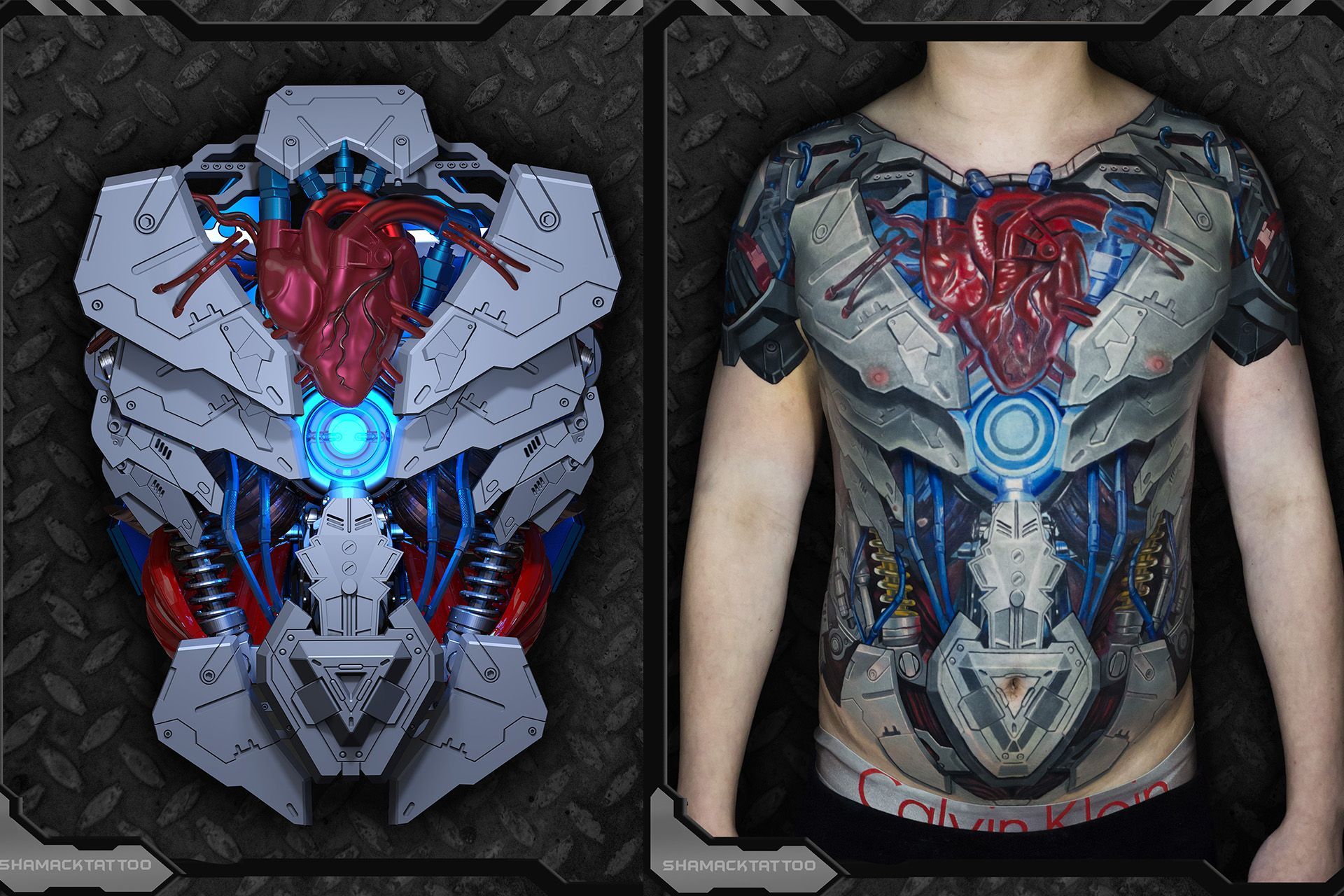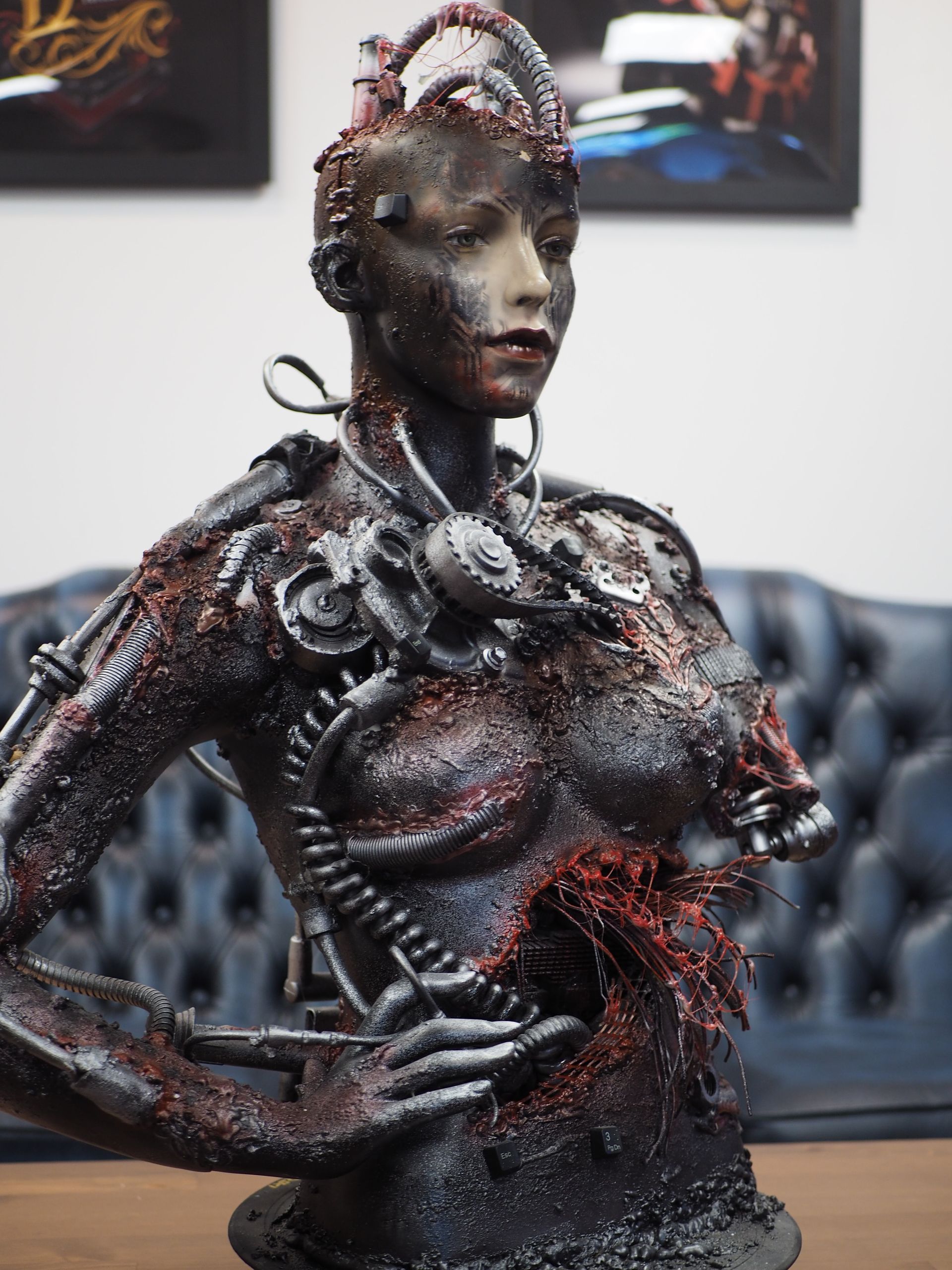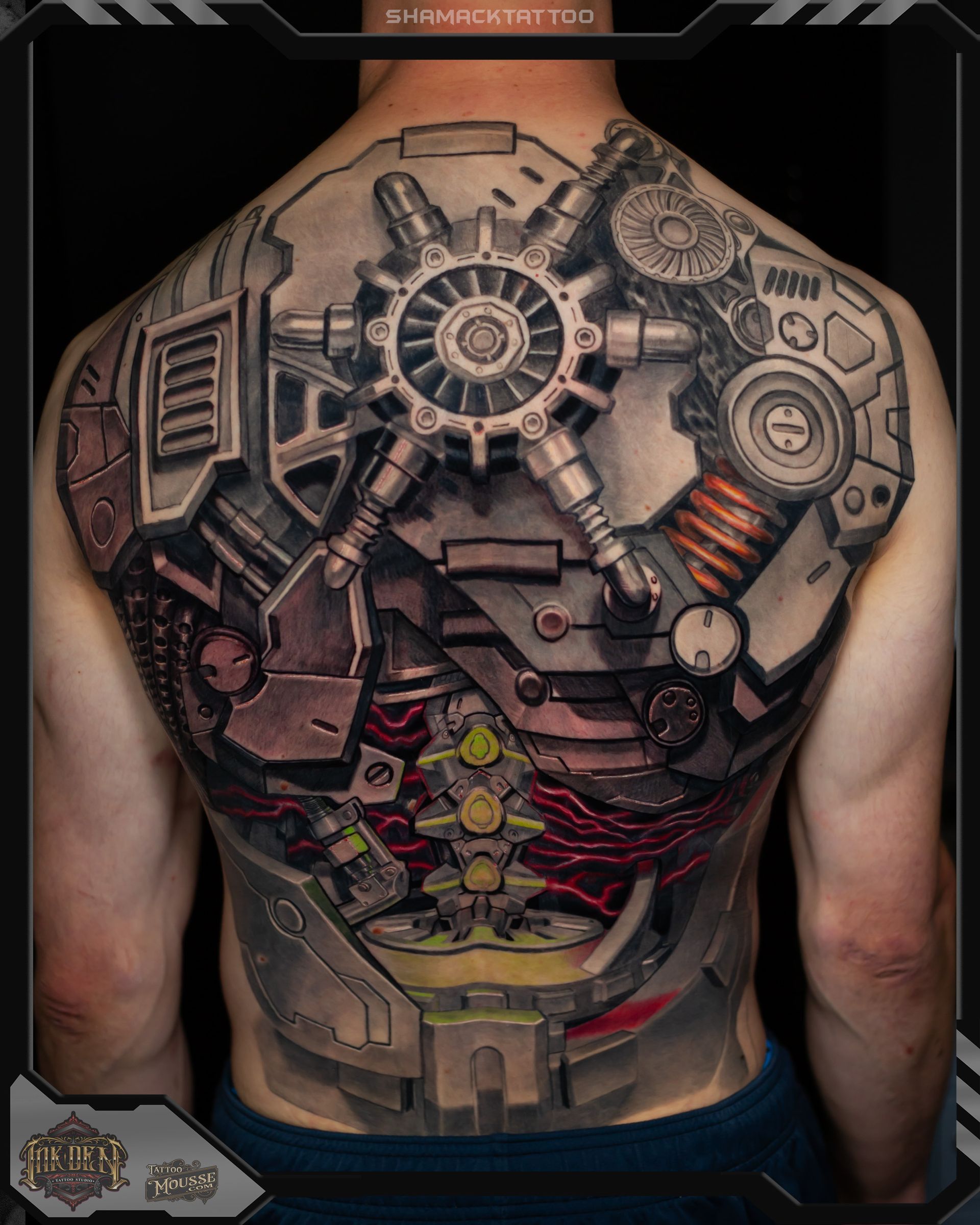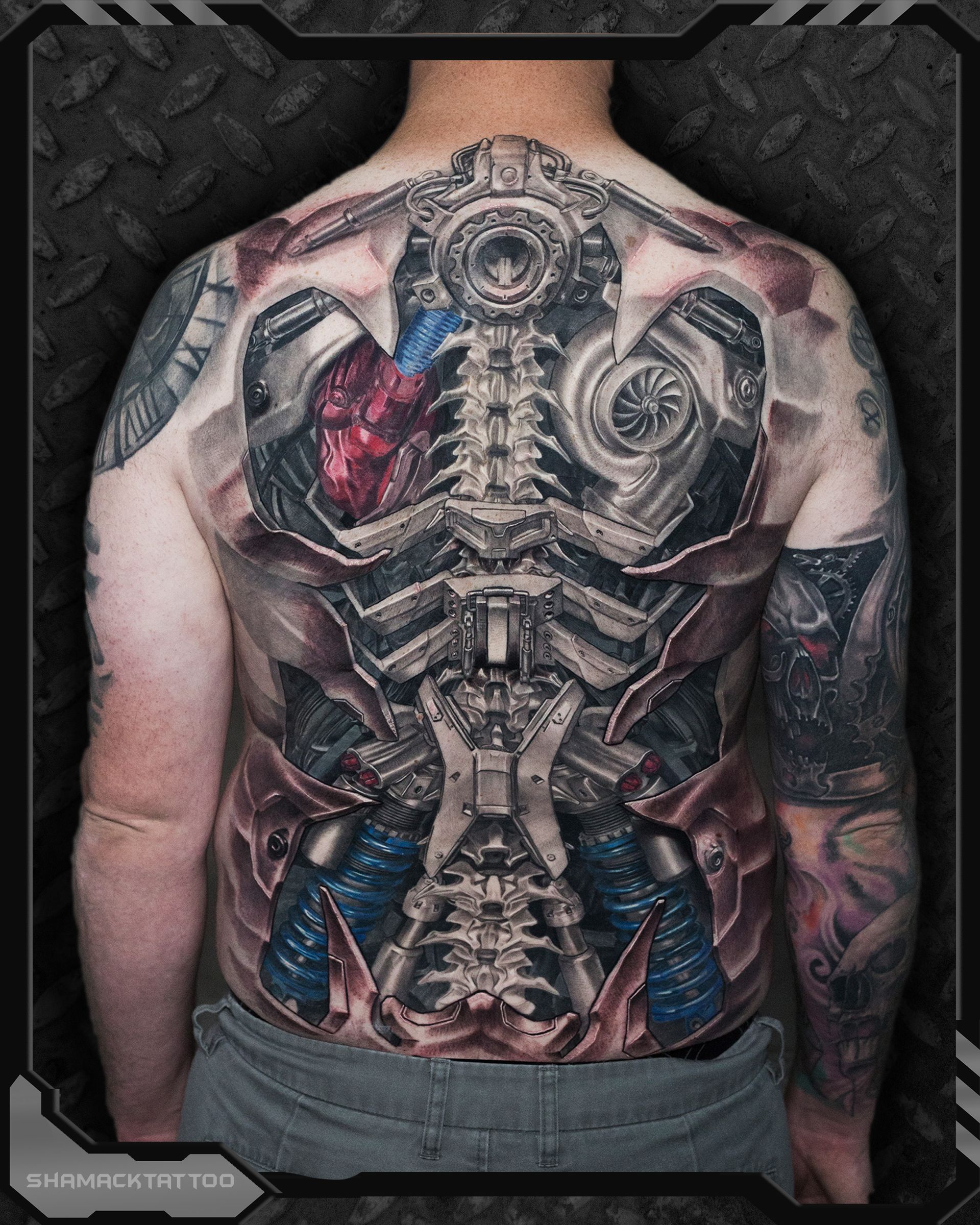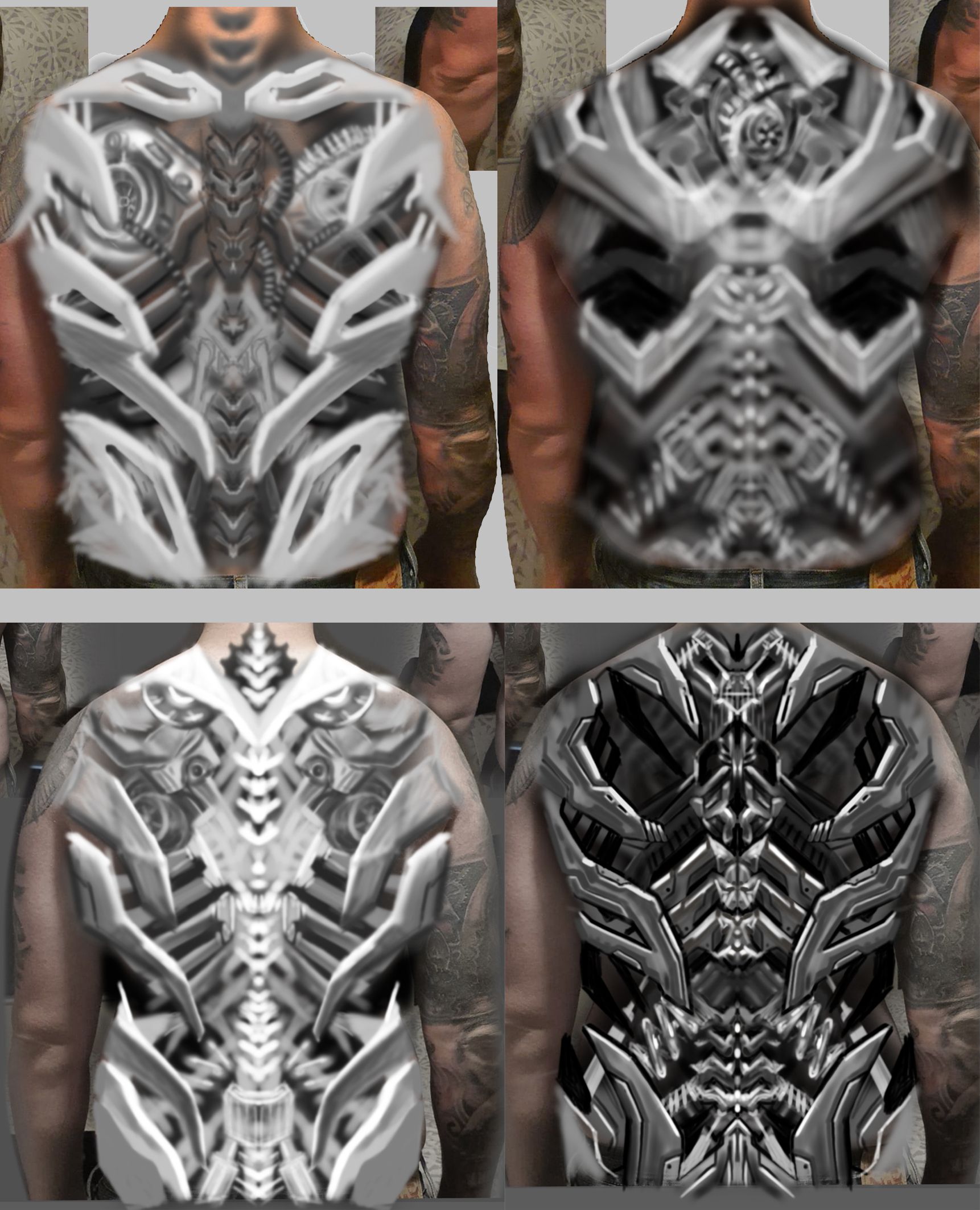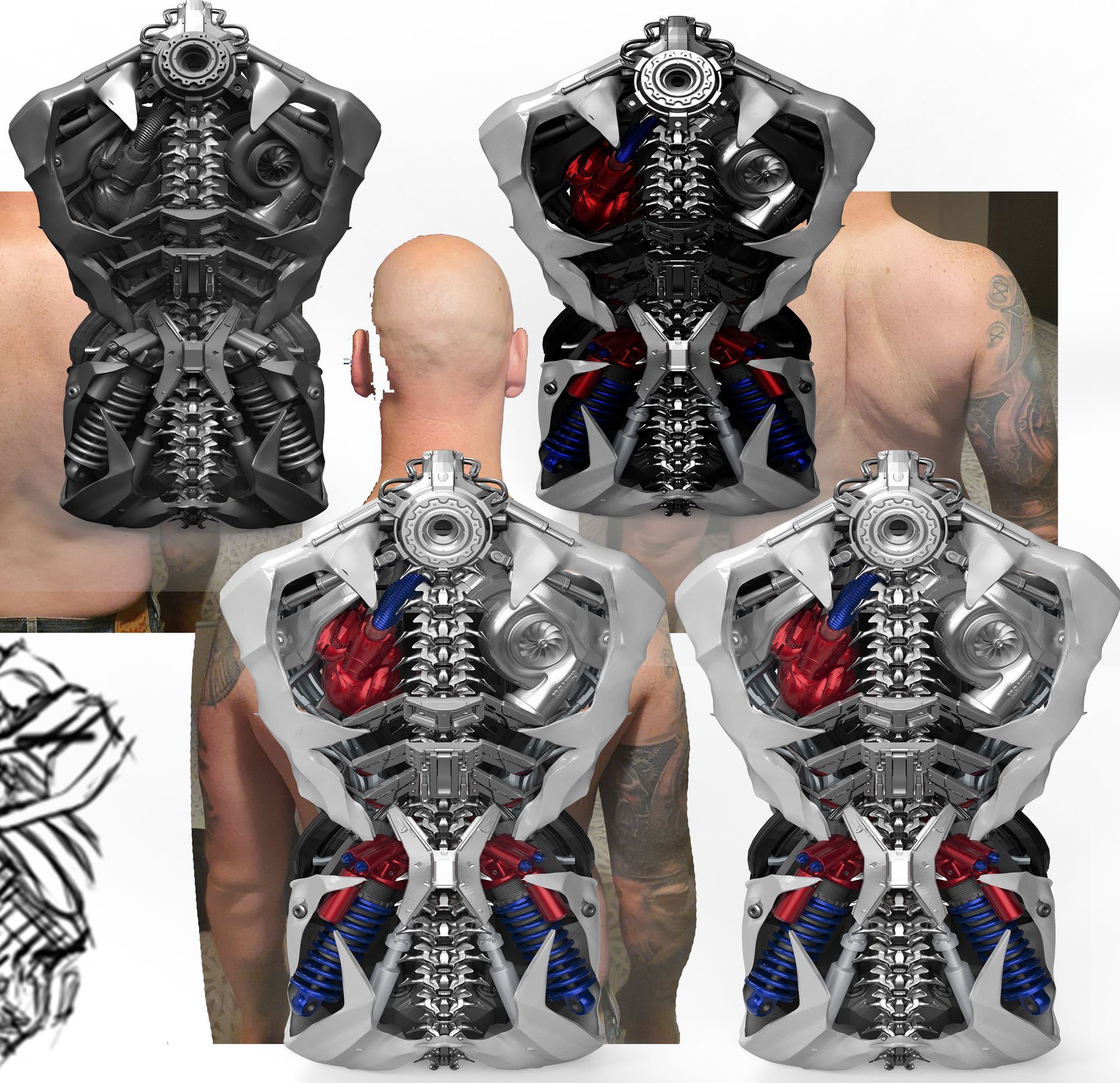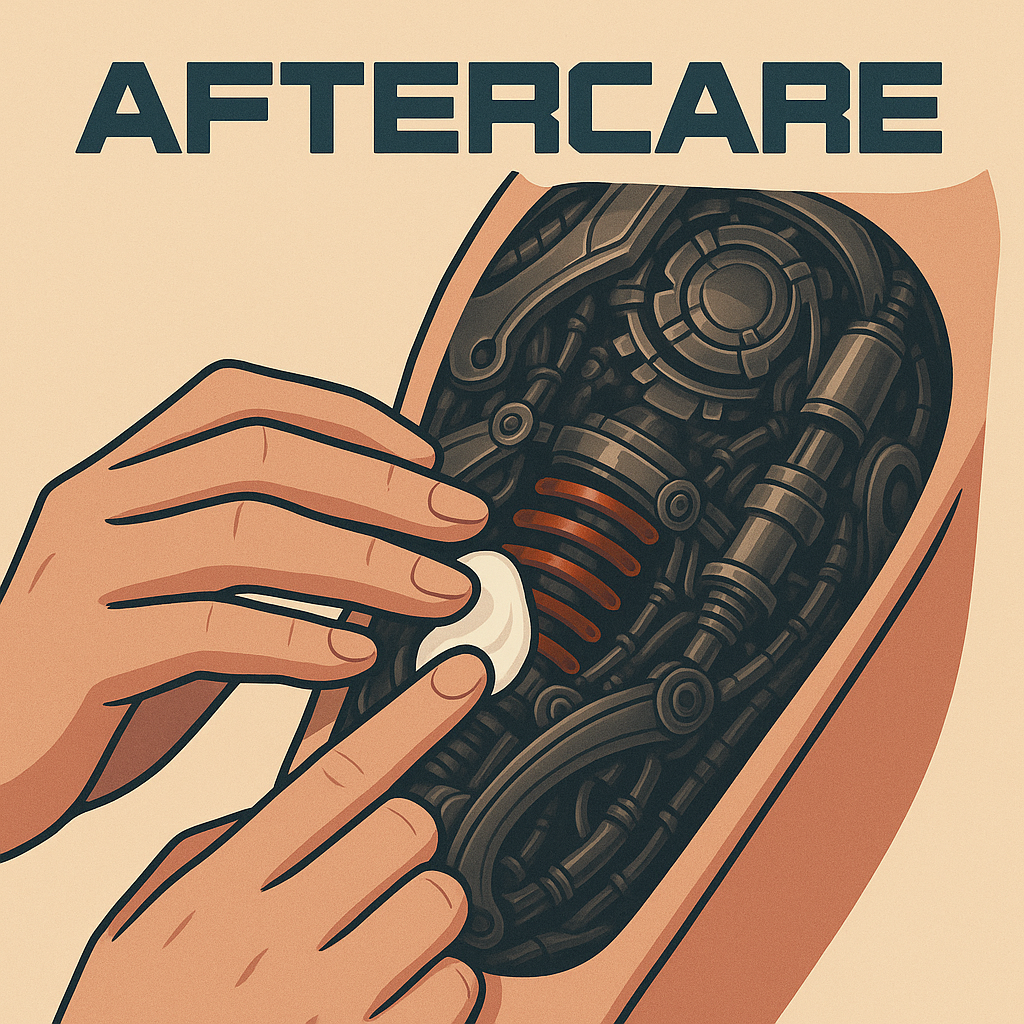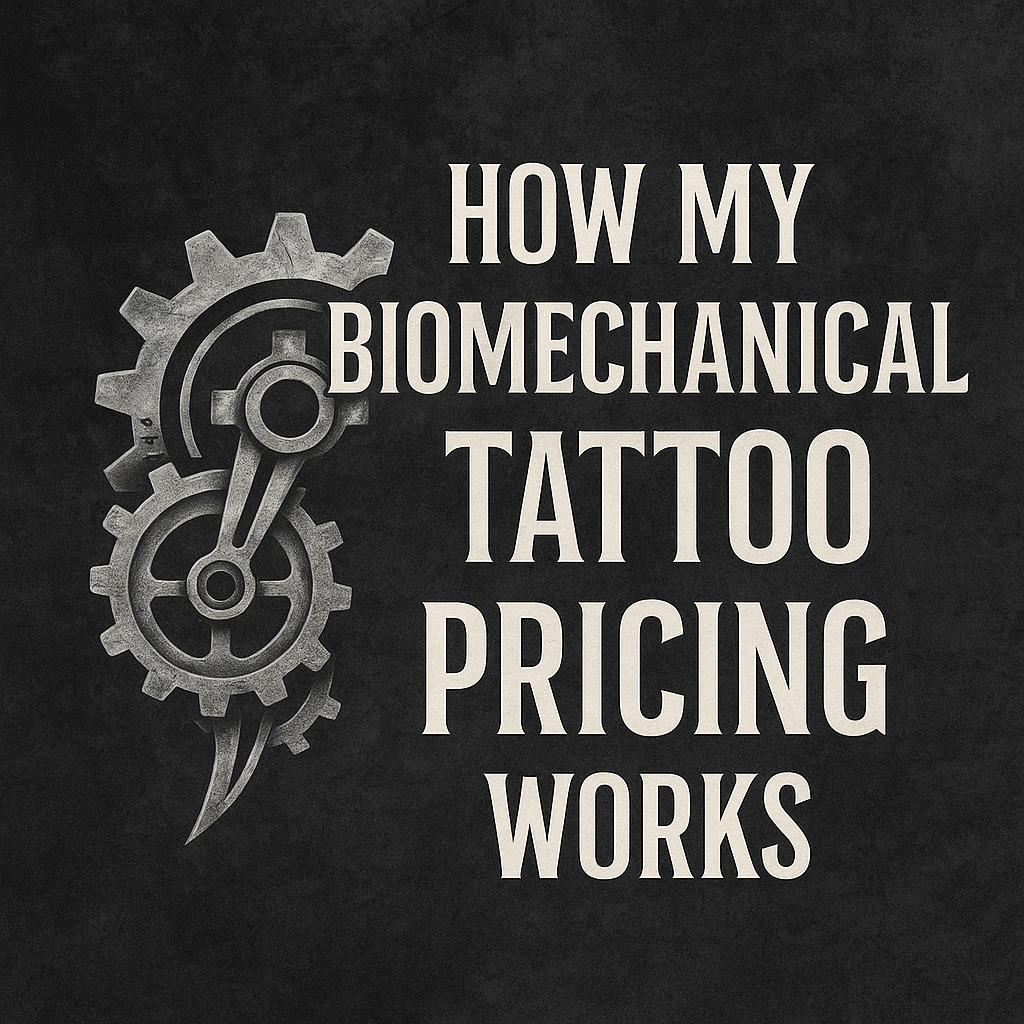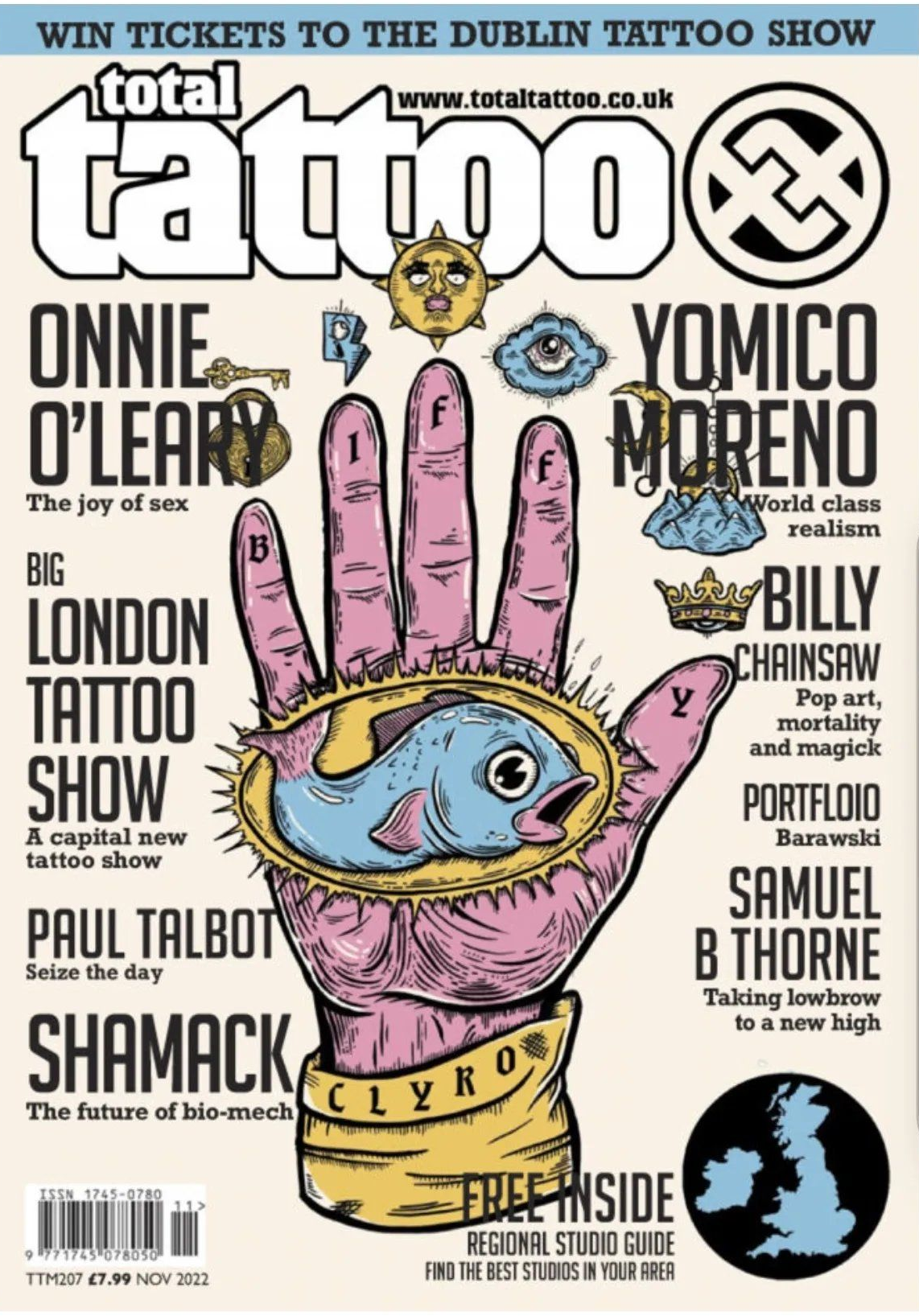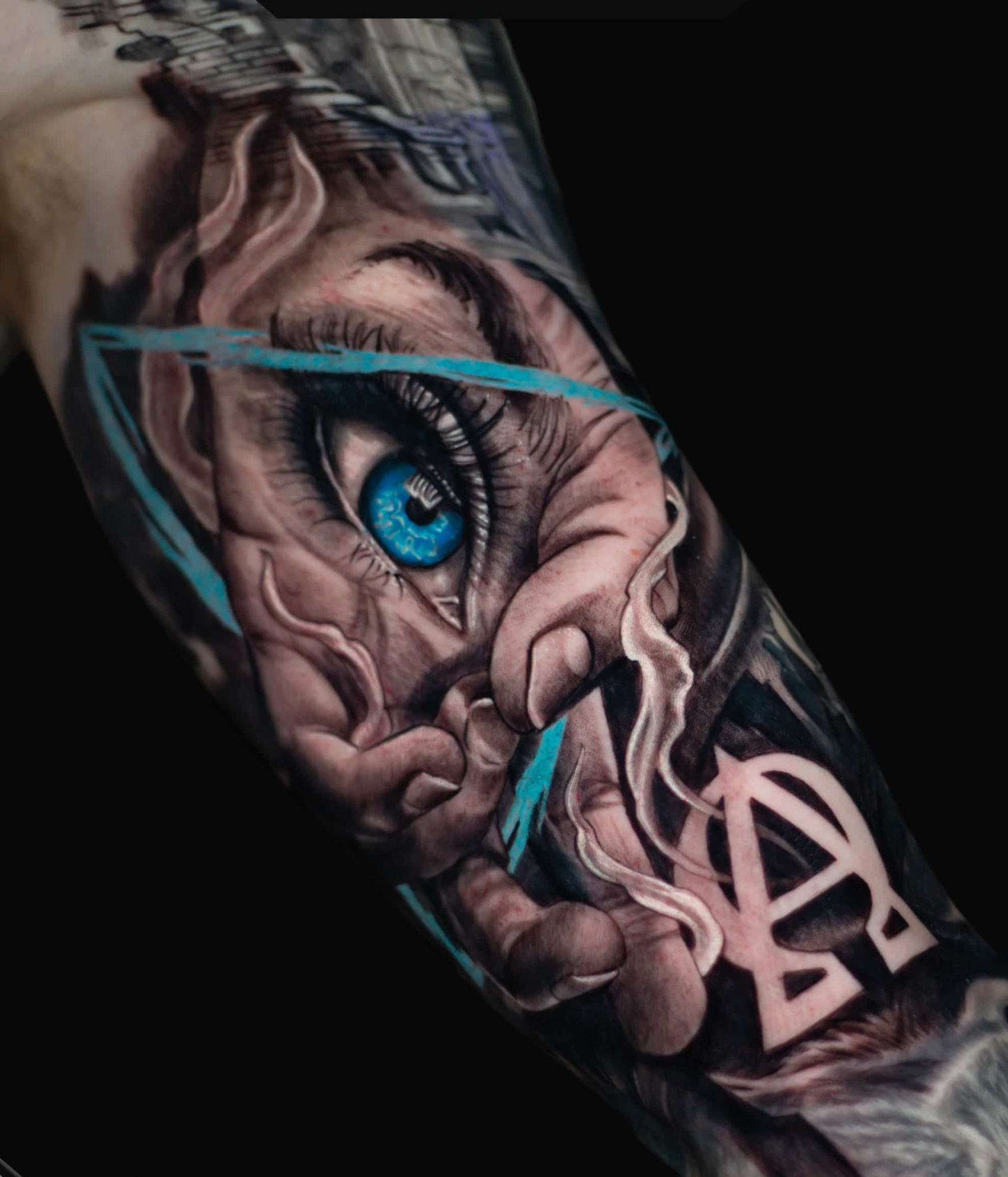Biomechanical Tattoos
When Flesh Meets Machine
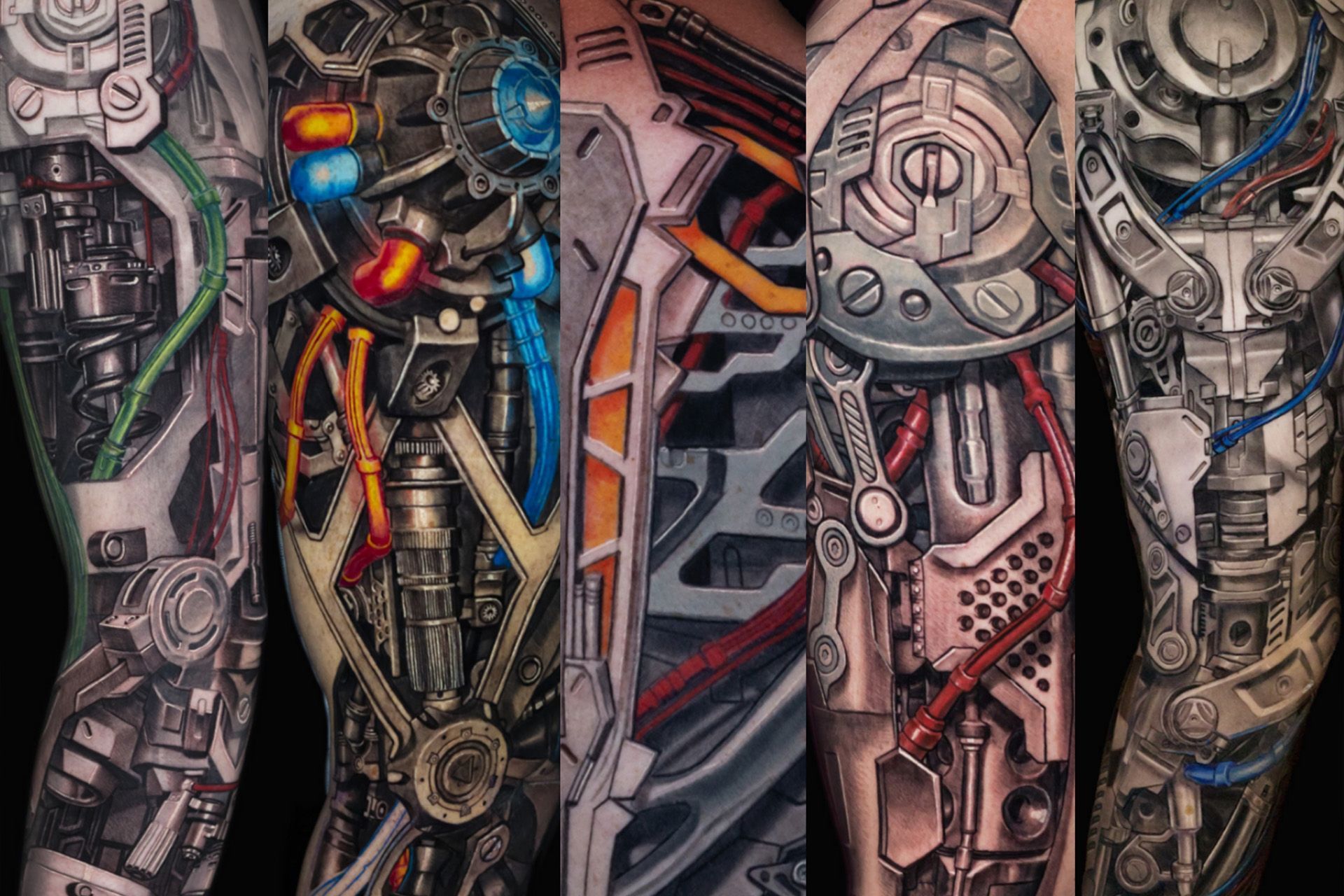
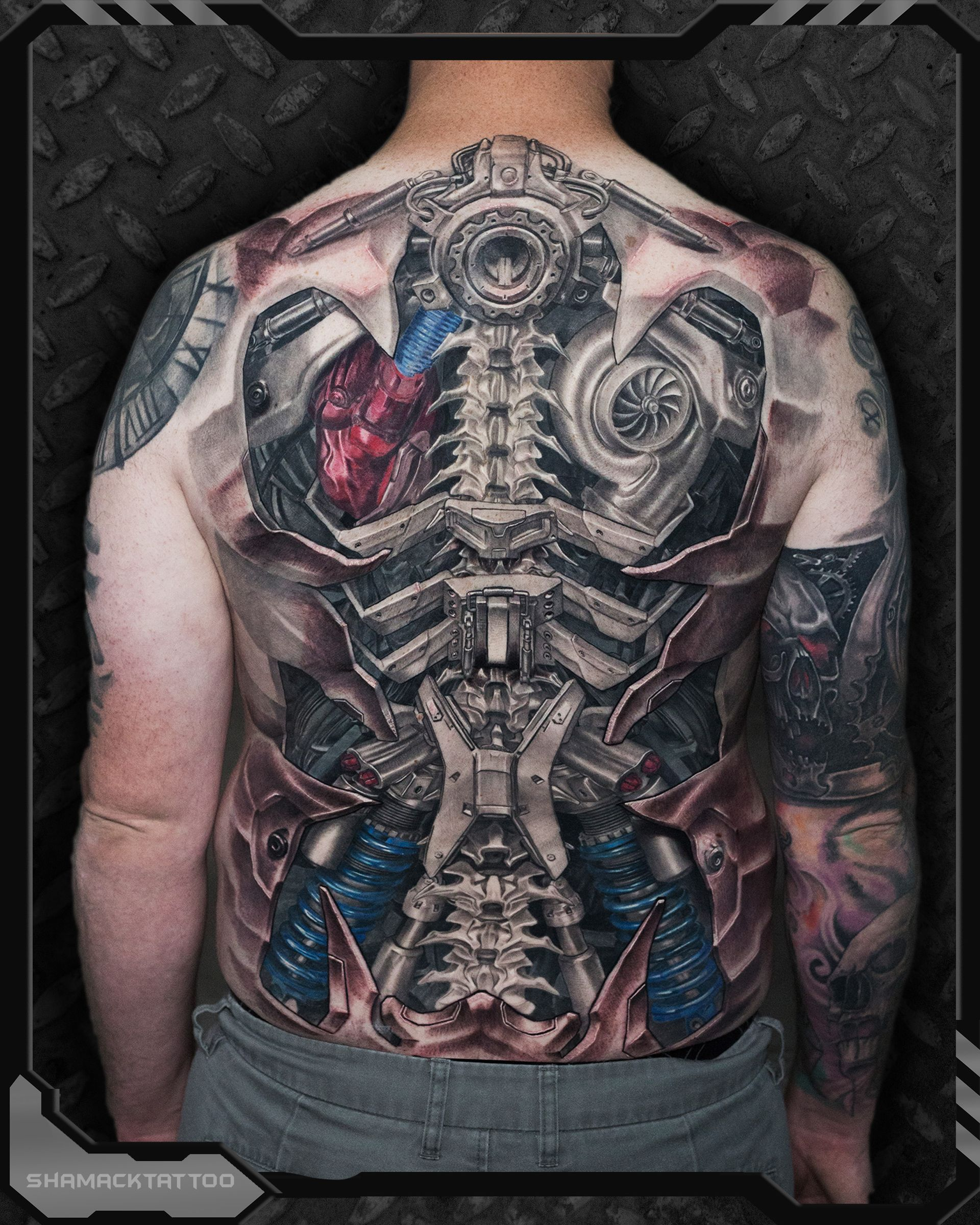
The world of biomechanical tattooing blurs the line between human anatomy and engineered design. Inspired by the look of pistons, gears, and synthetic muscle systems, this tattoo style explores the fusion between living tissue and machine.
Over the years, biomech has evolved far beyond a visual trend. It’s become a form of art that connects imagination, anatomy, and mechanics — something that perfectly aligns with the way I work as a realism and biomechanical tattoo artist.
How I Design My Biomechanical Work
My approach to biomech is deeply rooted in 3D modelling and digital sculpture. I design every tattoo using tools like ZBrush to create accurate lighting, shadow, and depth before I even start tattooing. This process allows clients to see how their tattoo will move and wrap across their body before the first session begins.
Origins and Inspiration
The biomechanical tattoo style first gained attention in the late 1970s and 1980s thanks to H.R. Giger’s visionary designs in films like Alien and Blade Runner. These works sparked a fascination with organic machinery — a concept that continues to evolve today.
For me, biomech isn’t just a visual language — it’s an exploration of balance between man, machine, and imagination. It’s about capturing what could exist beneath the skin in a futuristic, engineered world.
Booking a Biomechanical Tattoo
Creating large-scale biomechanical tattoos requires preparation and time. I often work in back-to-back multi-day sessions, especially for international clients, to achieve consistent quality and detail.
If you’re considering starting a biomech piece, visit my booking page to send in your idea and placement. Once the form is complete, I’ll contact you to arrange a consultation where we’ll discuss your concept, reference visuals, and the 3D modelling stage
Modern Biomech: Art Meets Innovation
Today, biomechanical tattoos continue to evolve — from classic Giger-style dark imagery to lighter, more modern interpretations inspired by robotics, engineering, and organic design.
As technology moves forward, I see 3D modelling becoming an essential part of tattooing. It gives artists the ability to build truly three-dimensional designs that move naturally with the human form — the future of realism tattooing is already here.
Conclusion
Biomechanical tattooing is more than an aesthetic — it’s a conversation between creativity, technology, and anatomy. Whether it’s a full sleeve, chest piece, or back project, each tattoo becomes a story of evolution: part human, part machine.
To explore this style or book your next tattoo, visit my booking page or check out my latest work on Instagram.
To find more biomechanical tattoos and other styles go to my Protfolio
What Makes Biomechanical Tattoos Unique
Biomechanical tattoos are created to look like the skin has been peeled back, revealing a world of mechanical structure underneath — cables, joints, metal plates, or tubing woven together with muscle and bone. Each piece is different because it’s shaped around the client’s actual body flow and structure.
Unlike traditional tattoos, which often rely on symbols or meaning, biomech designs are about aesthetics, movement, and harmony. They become a living sculpture that transforms with the body’s motion.
